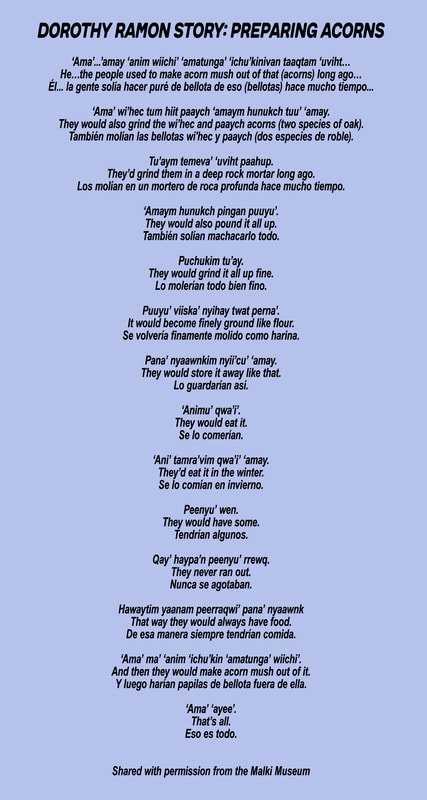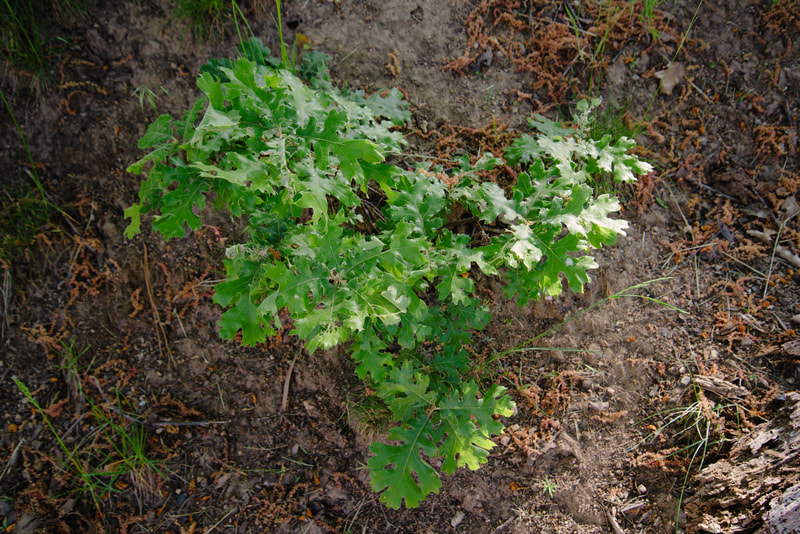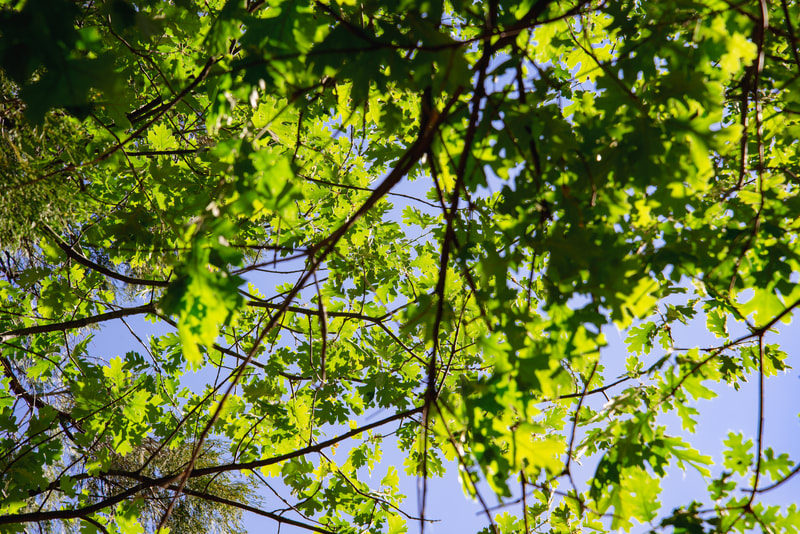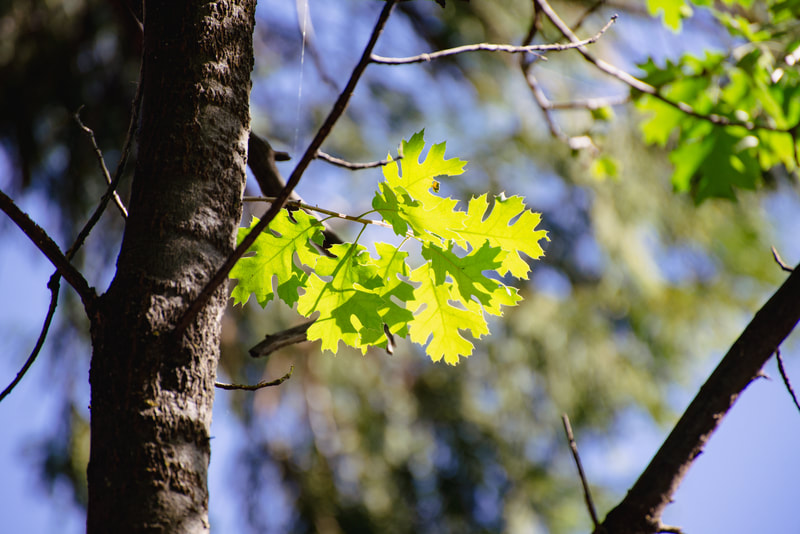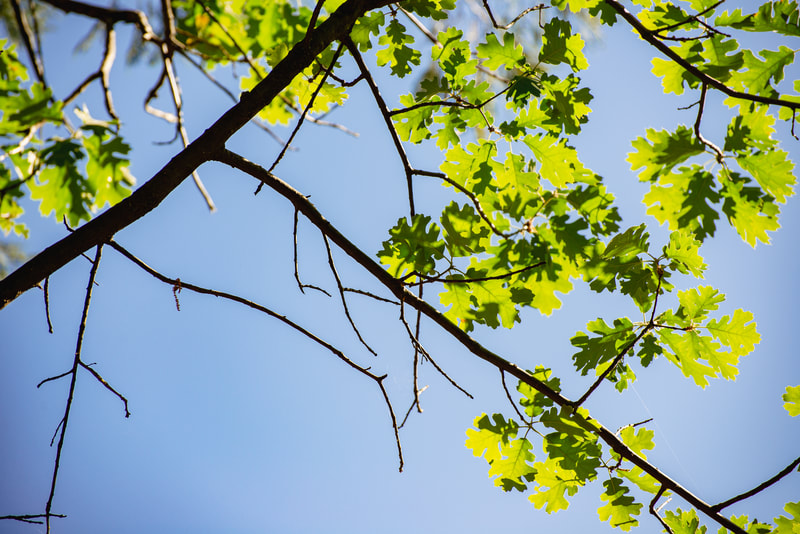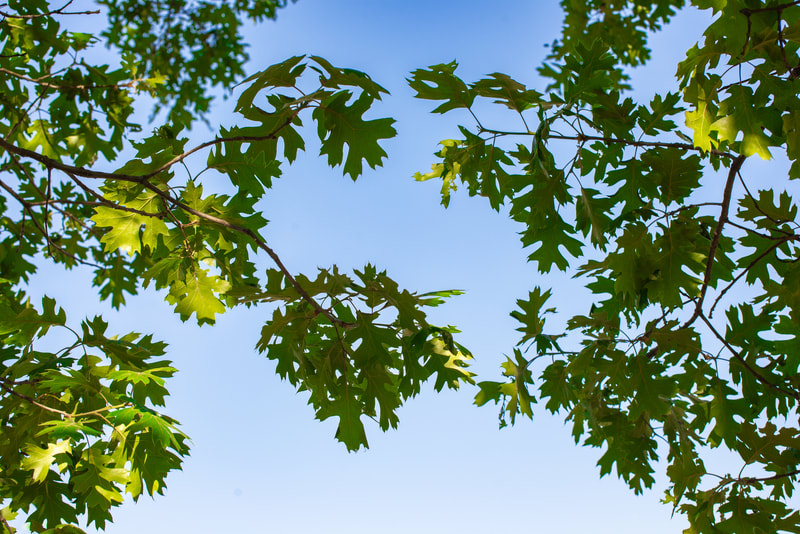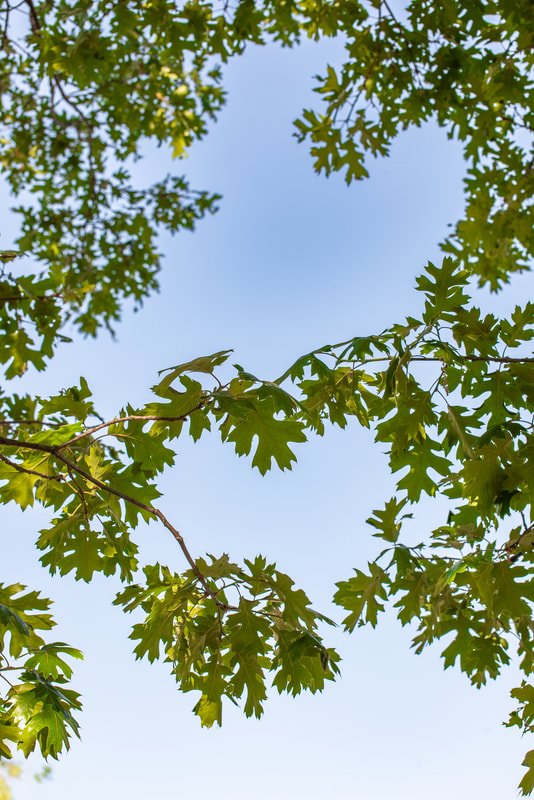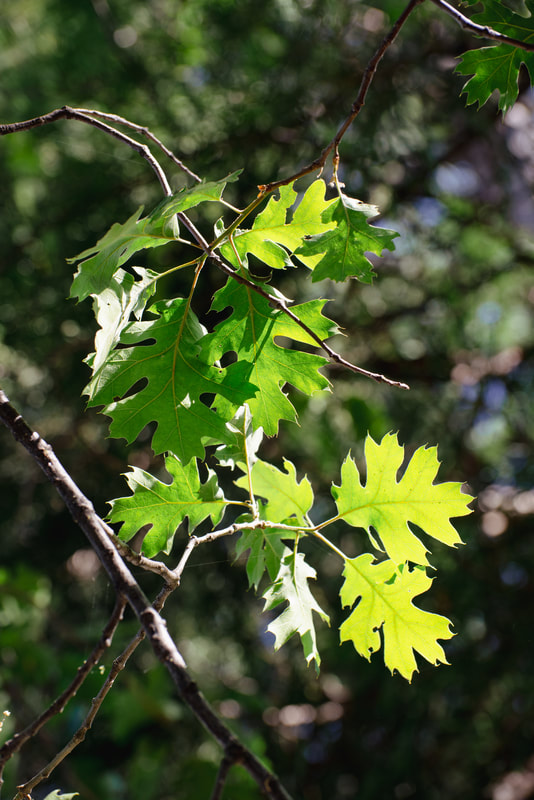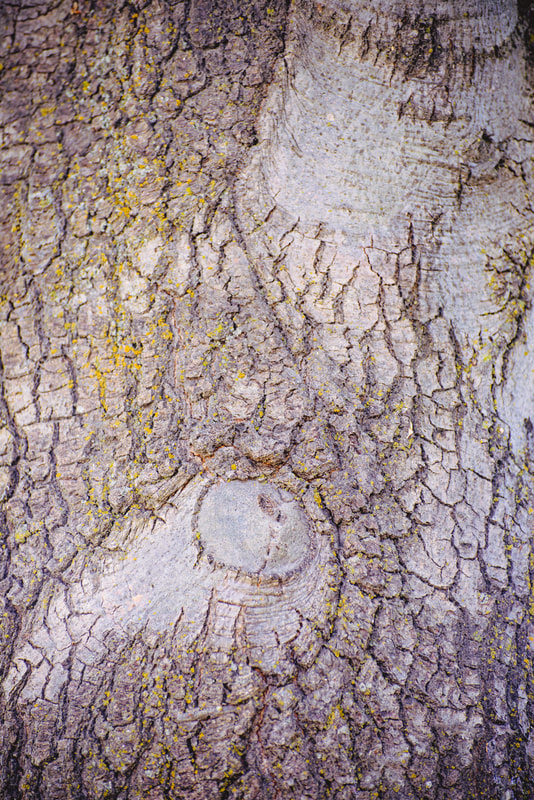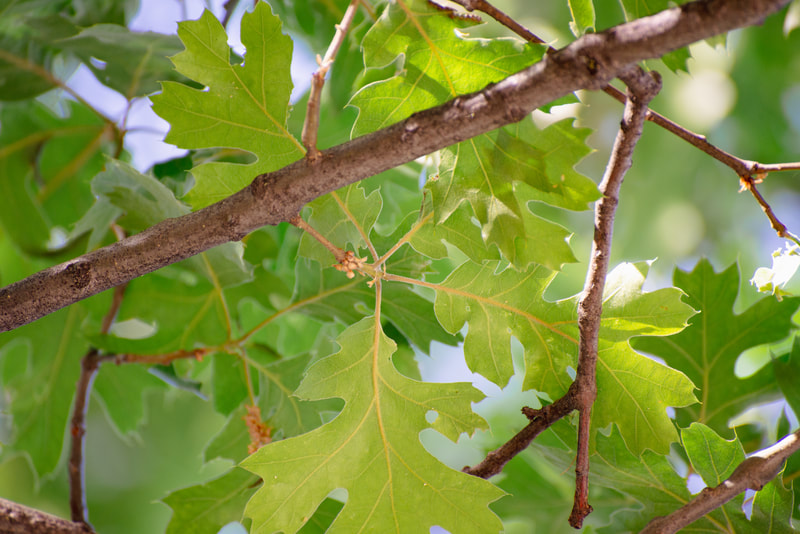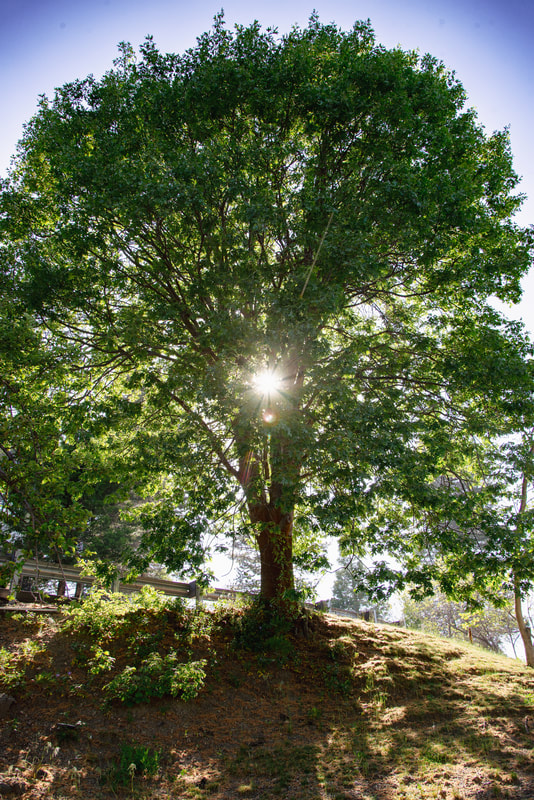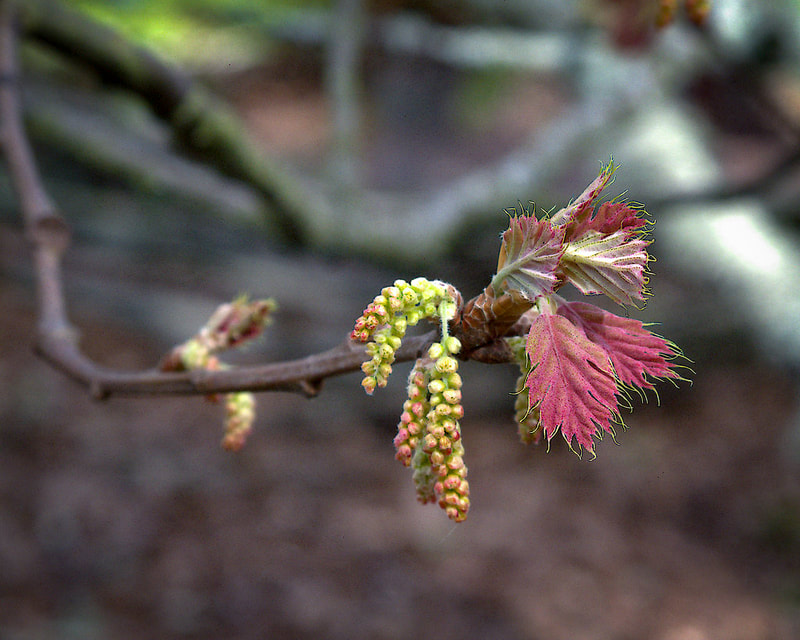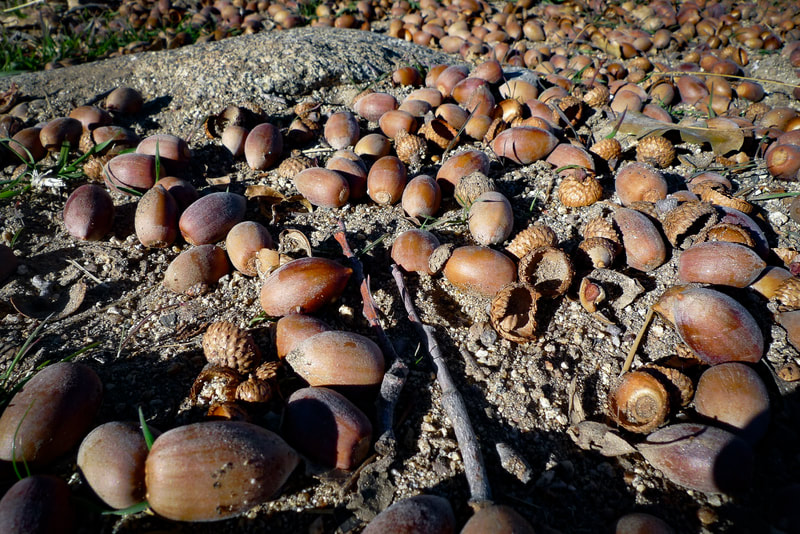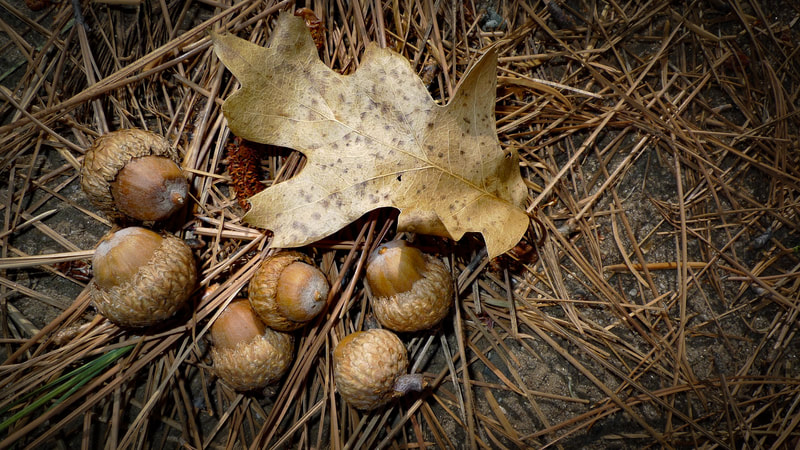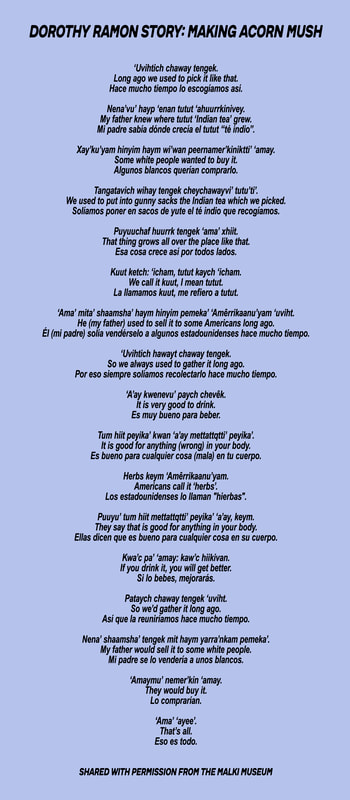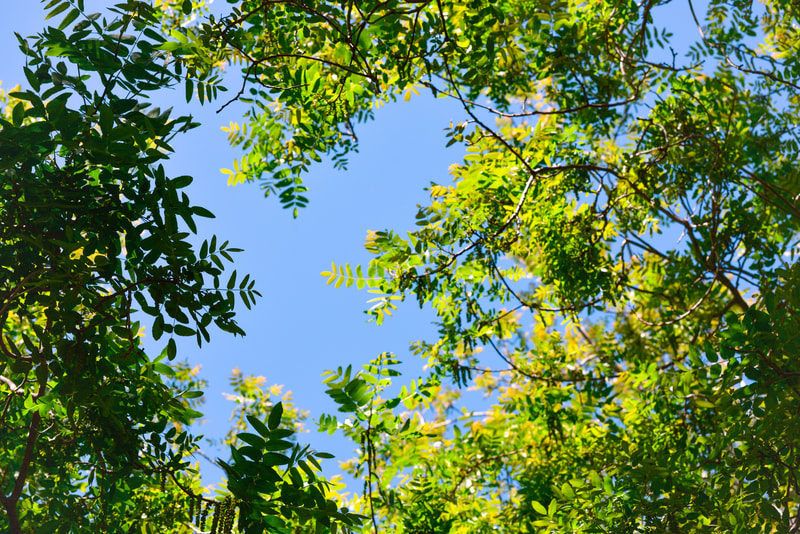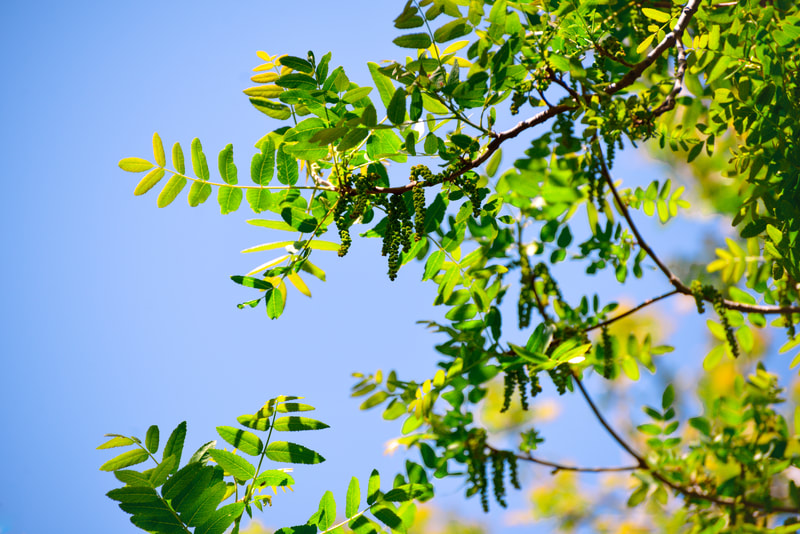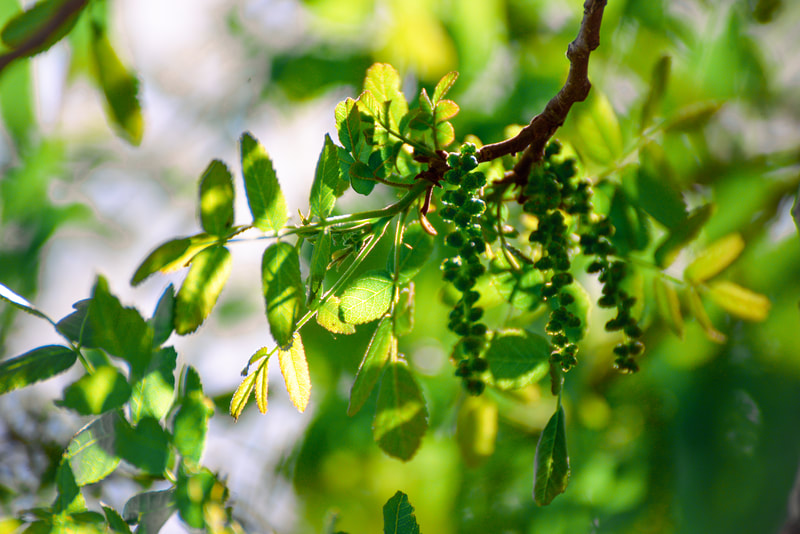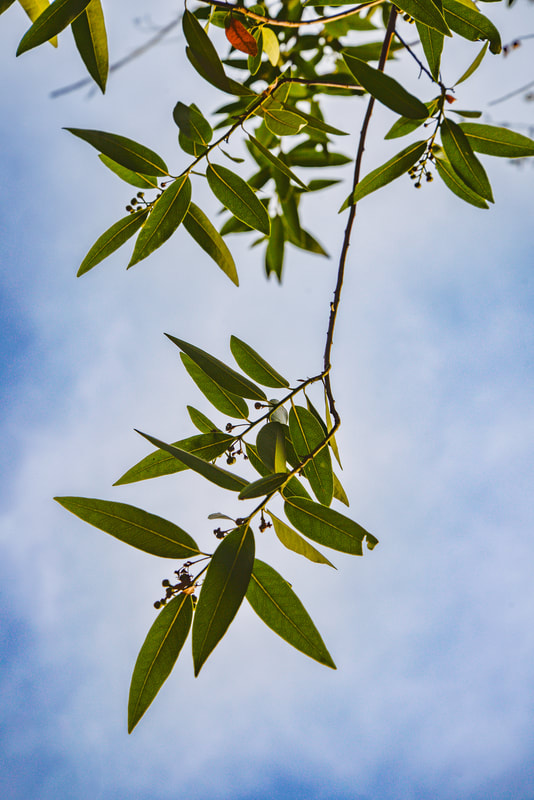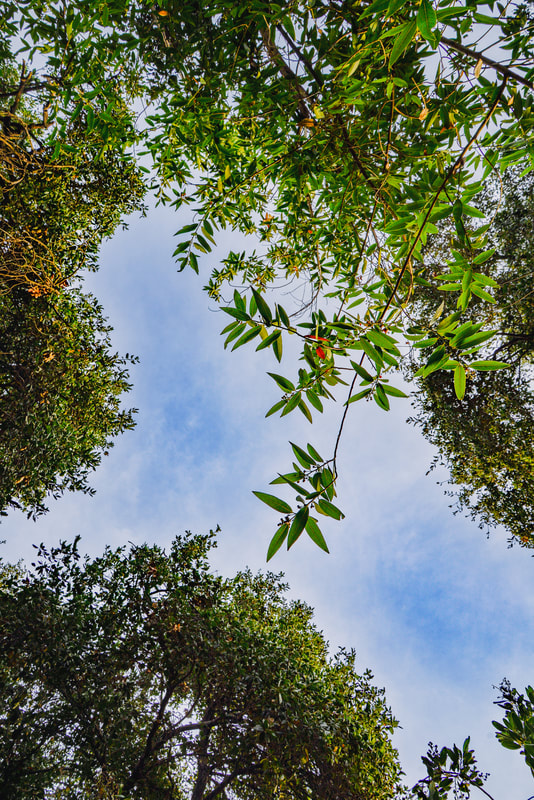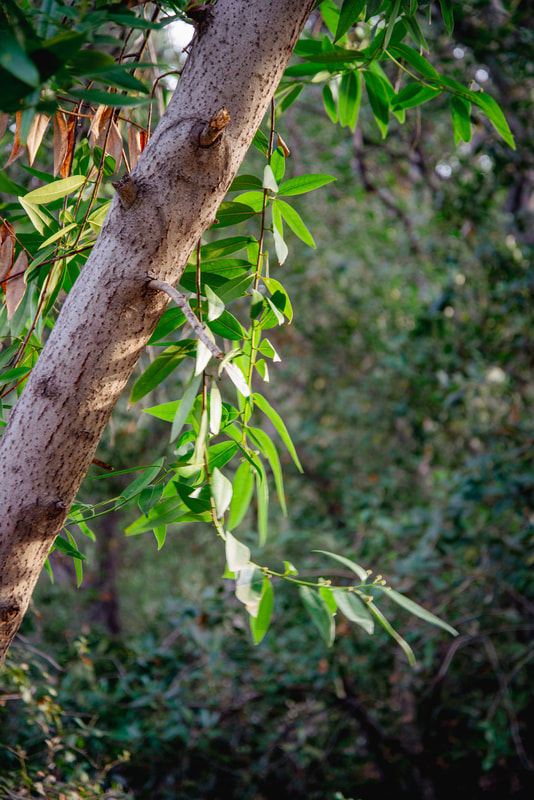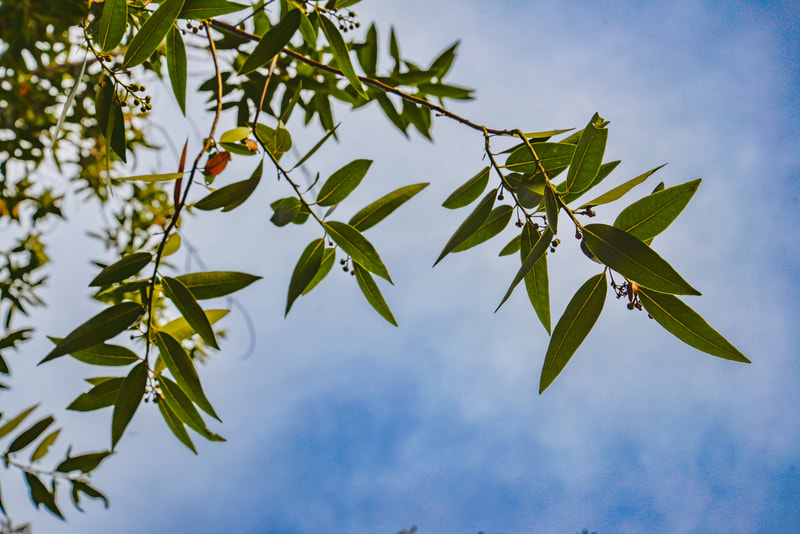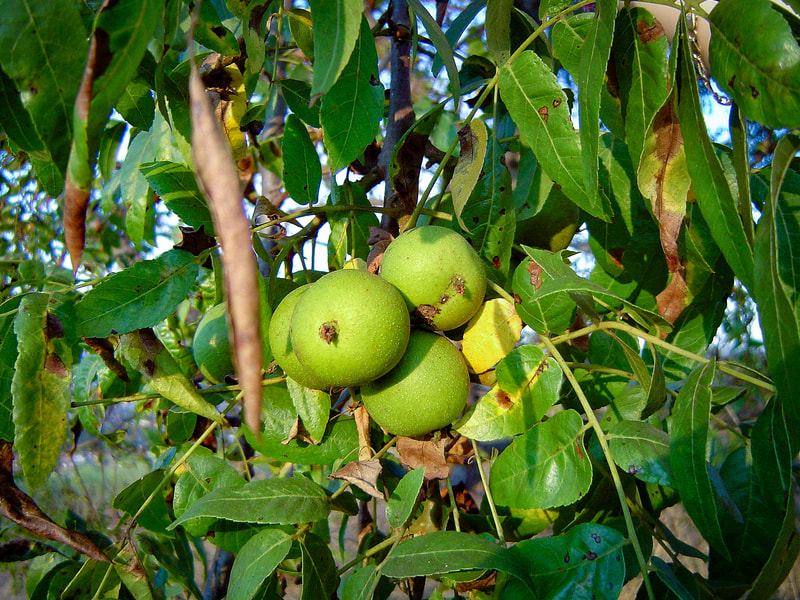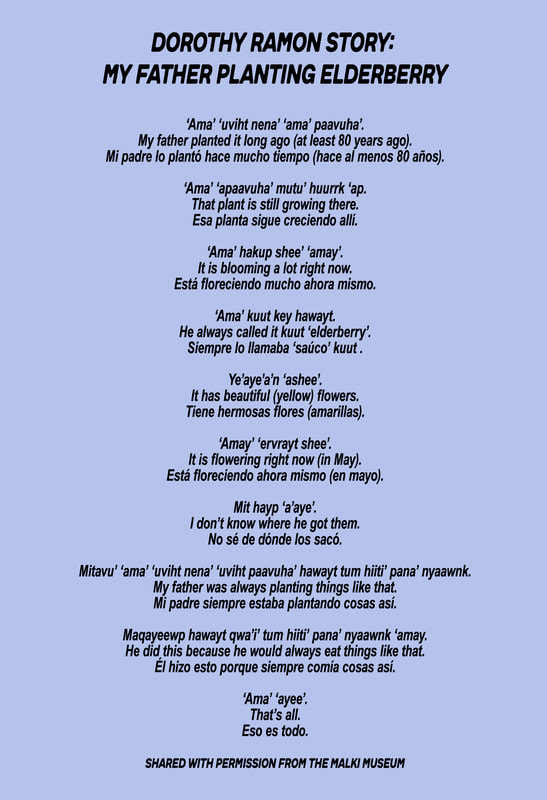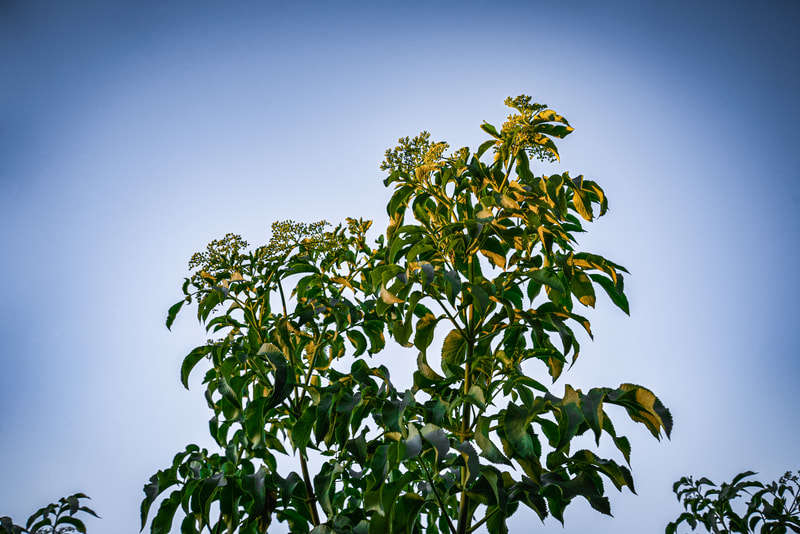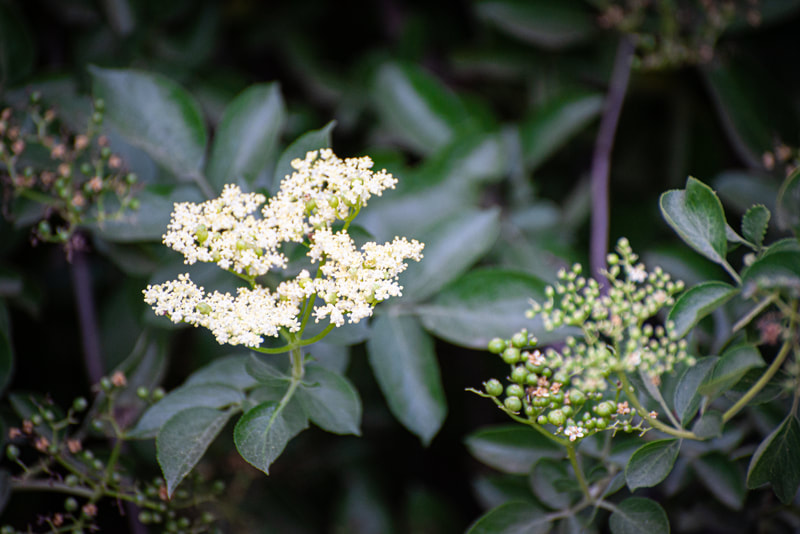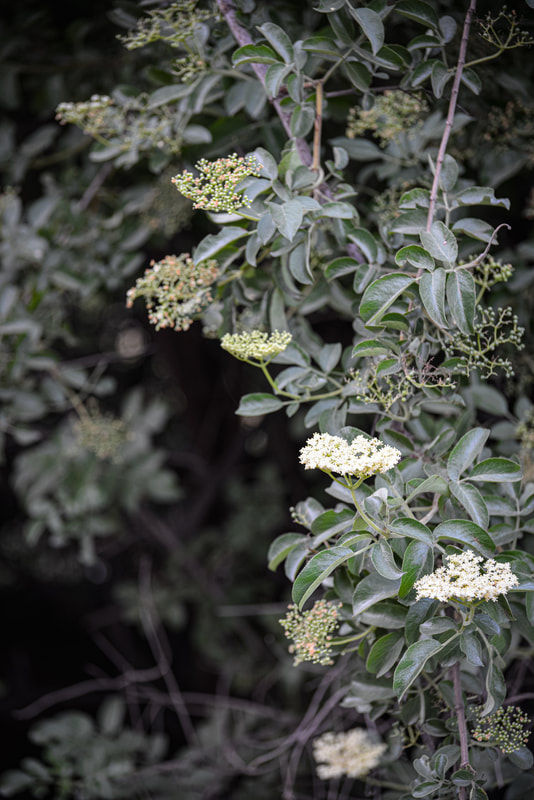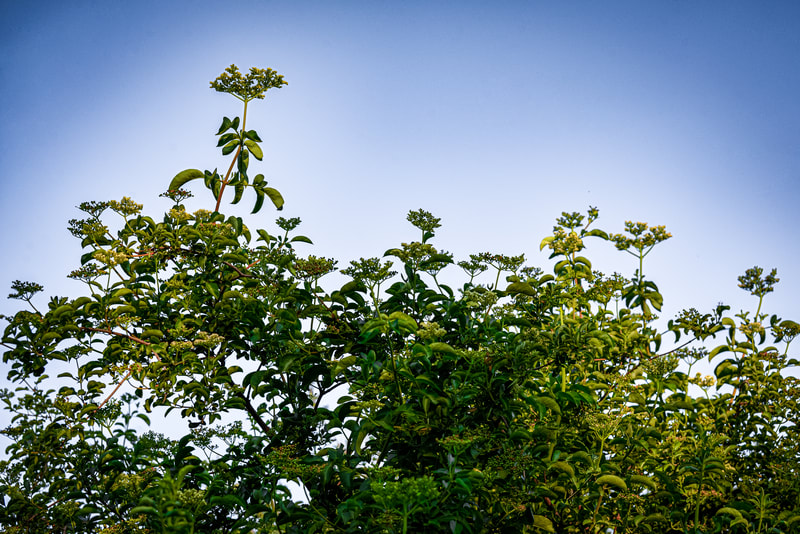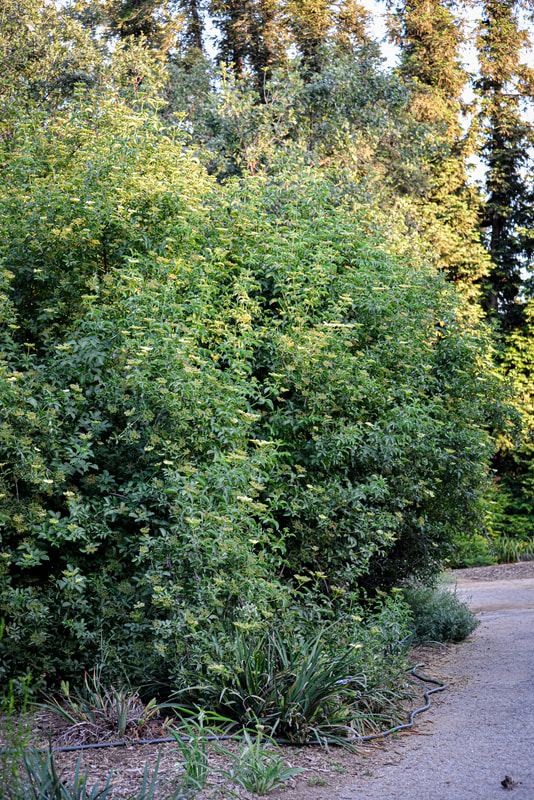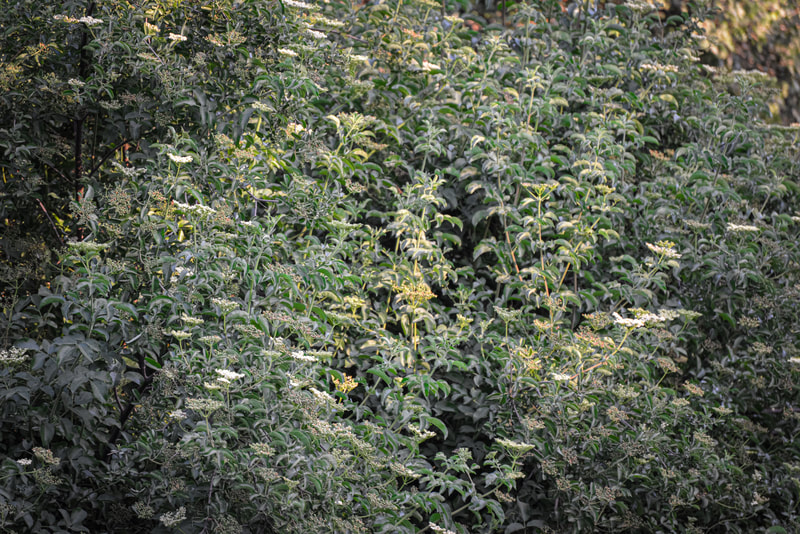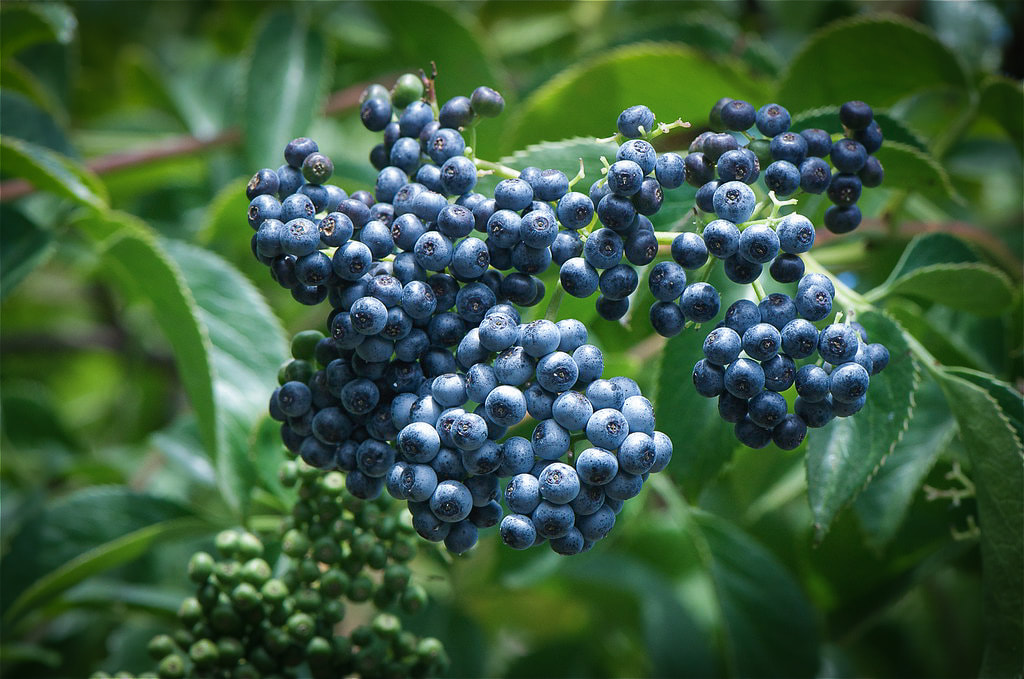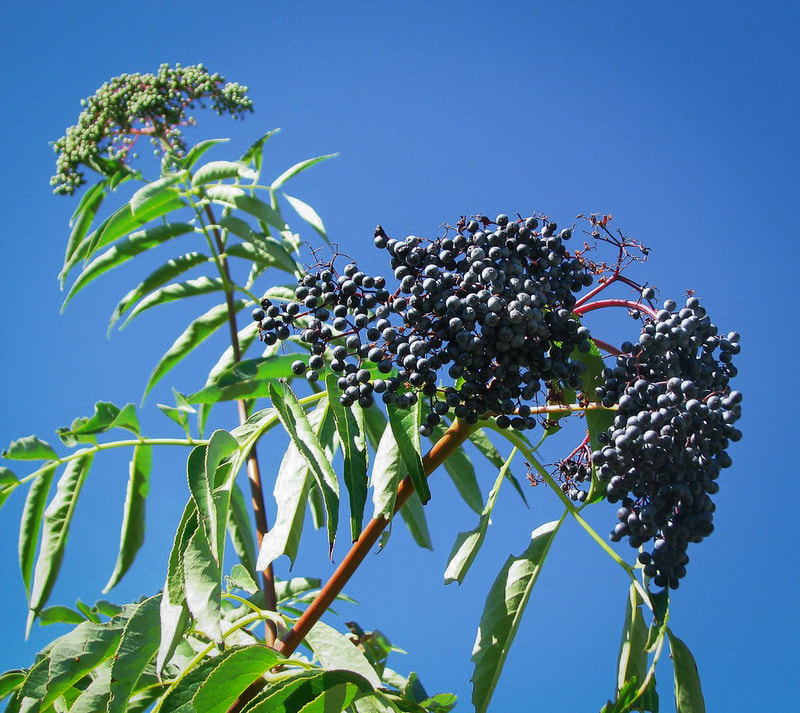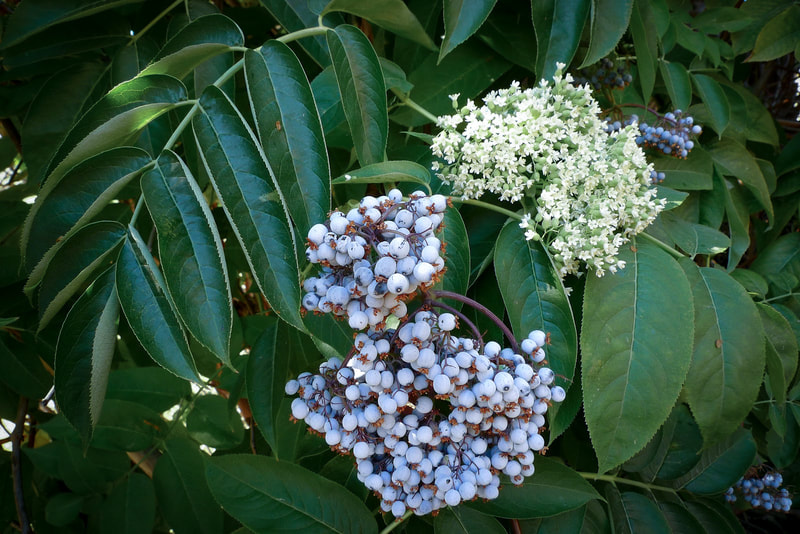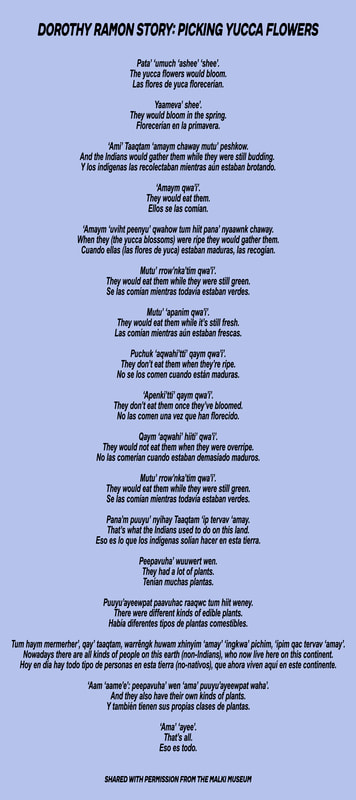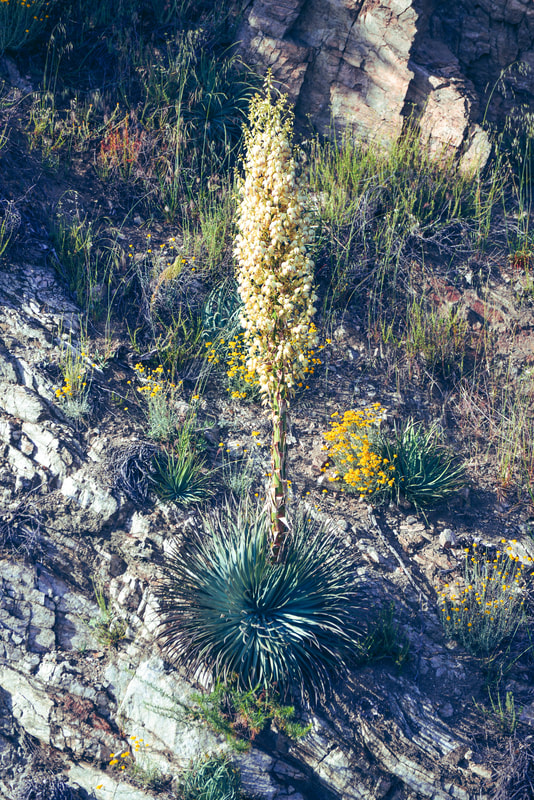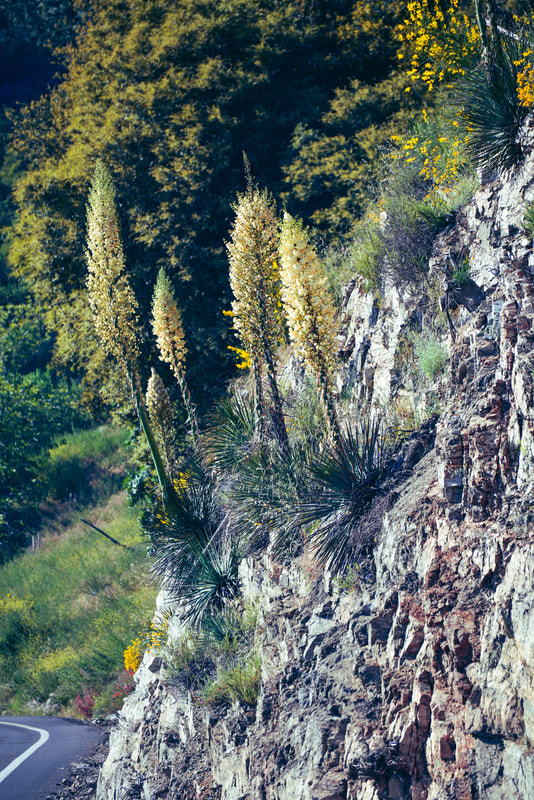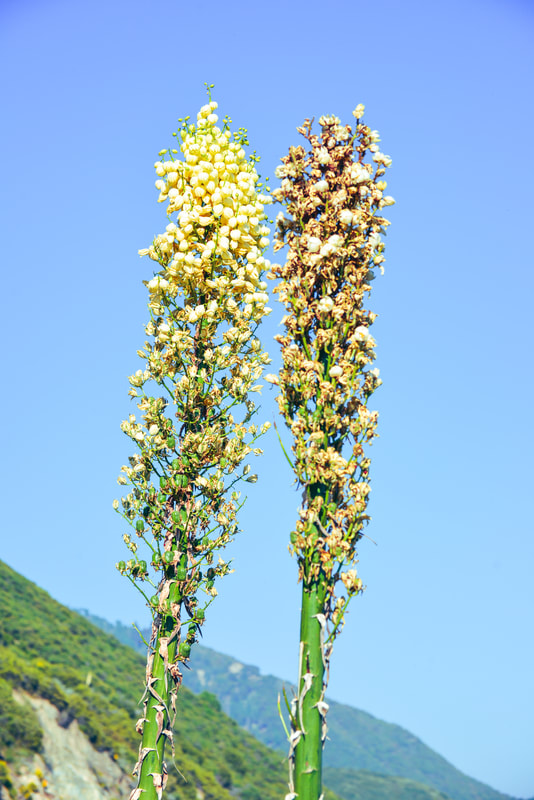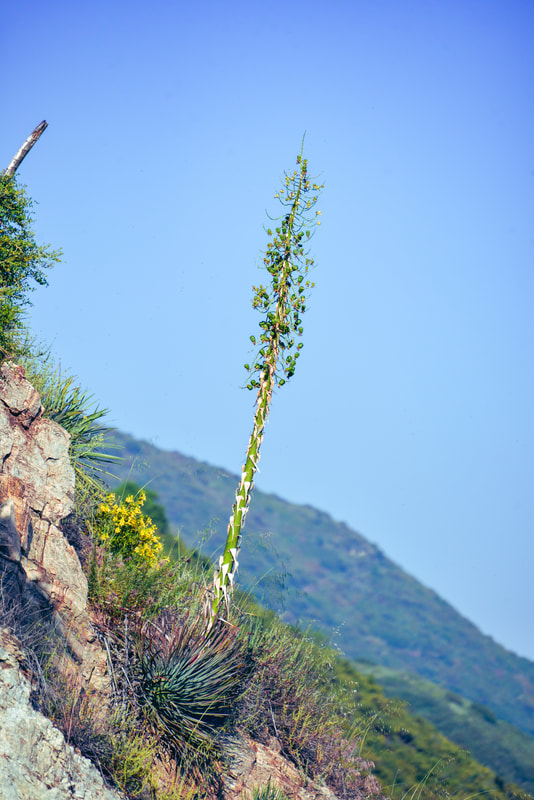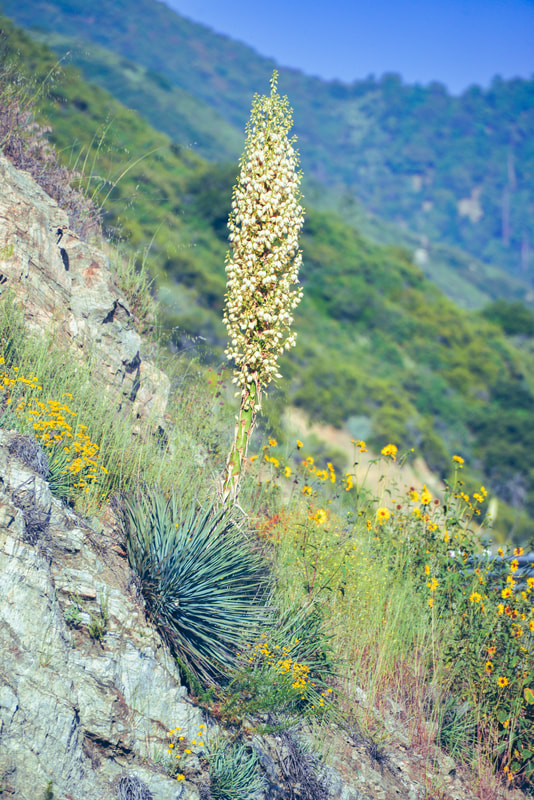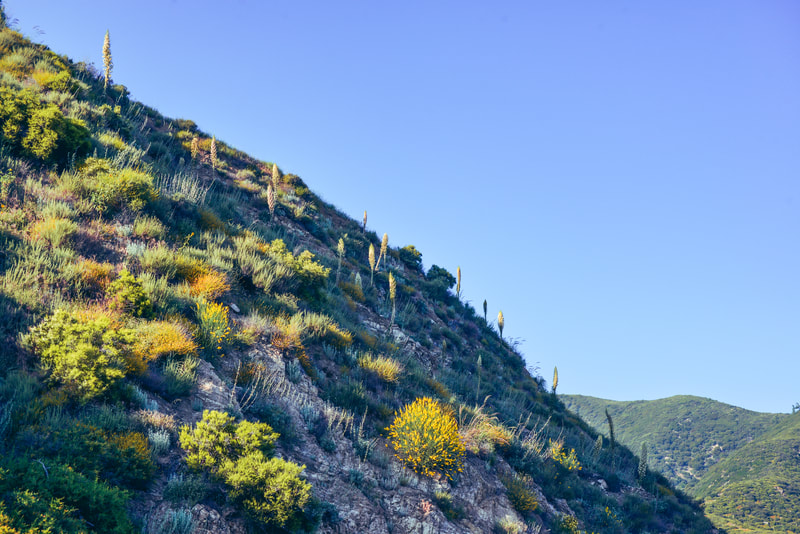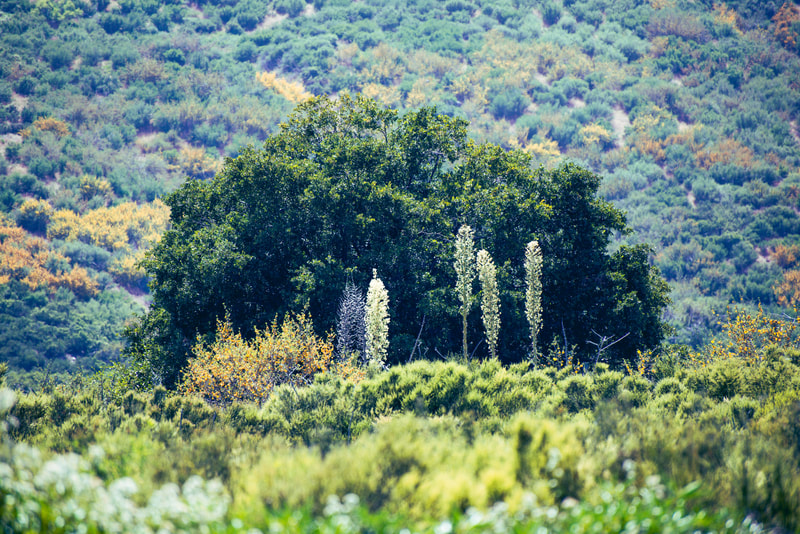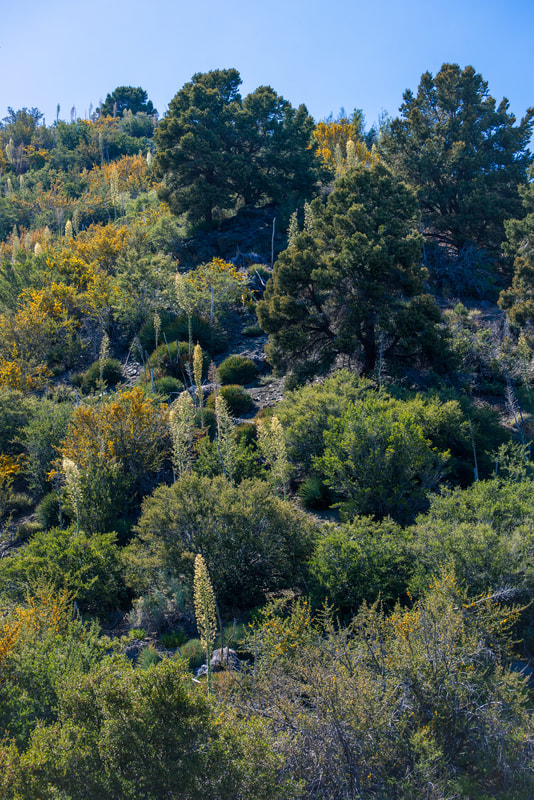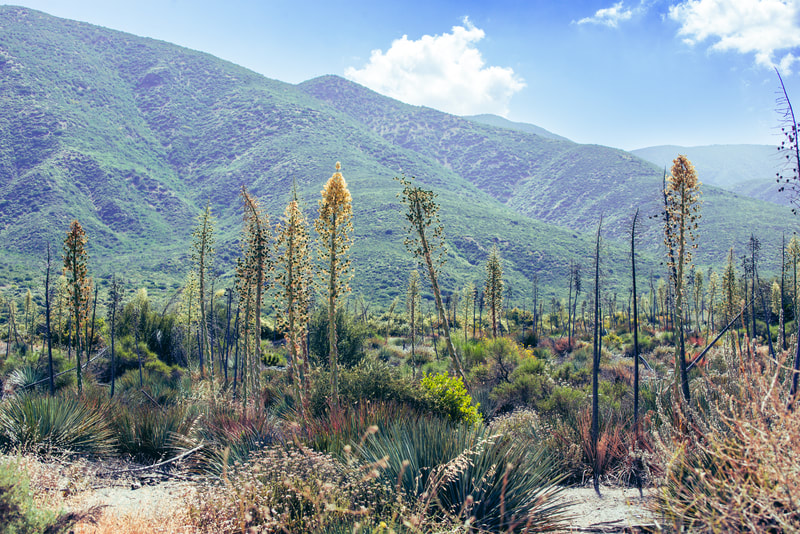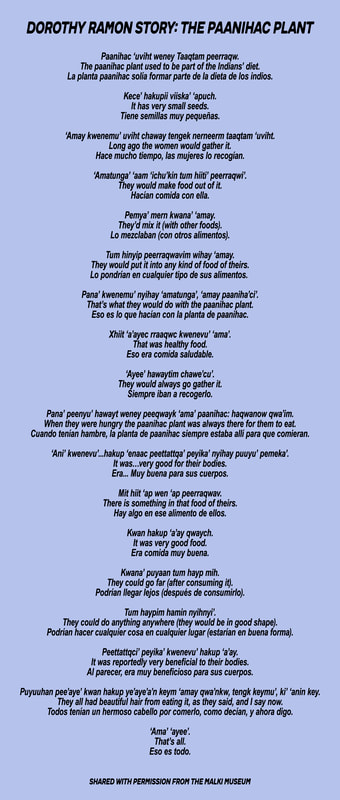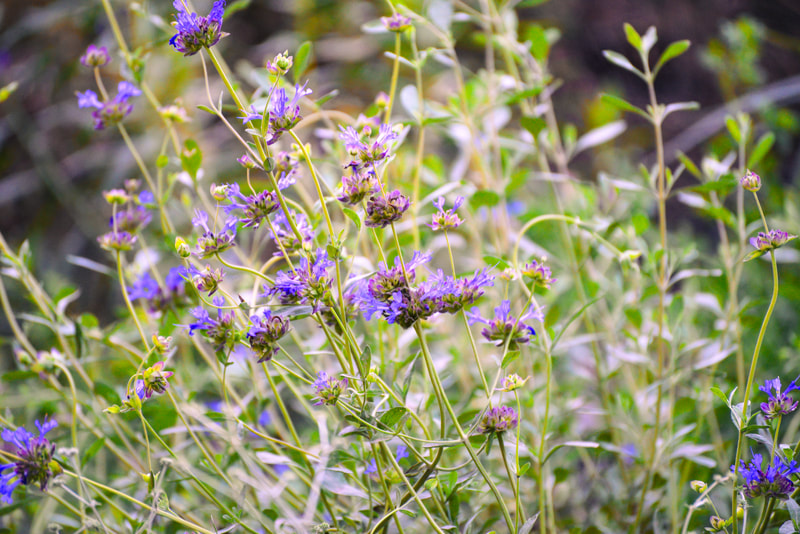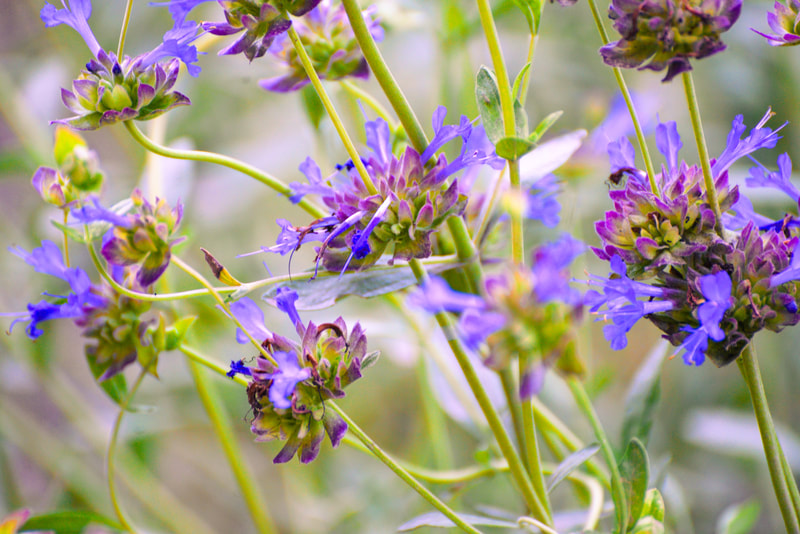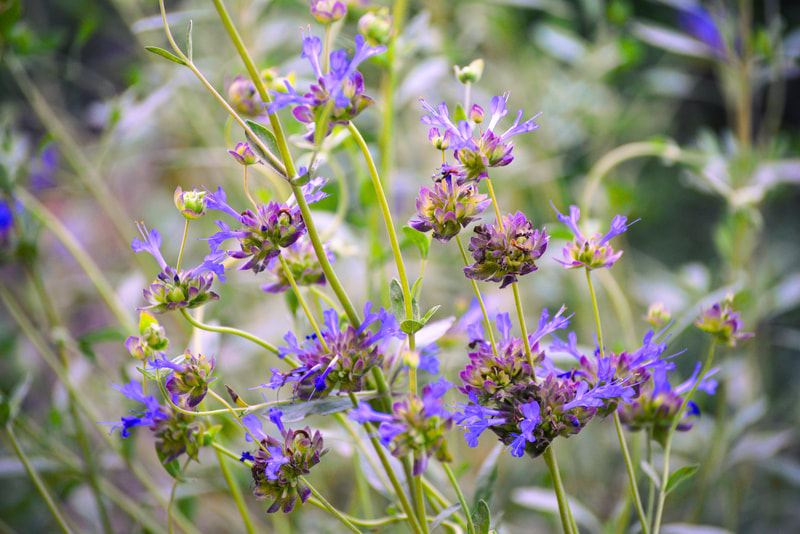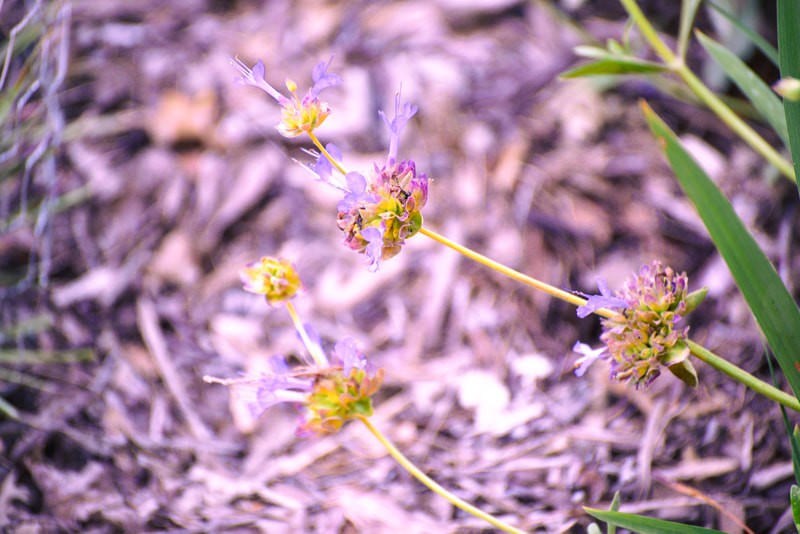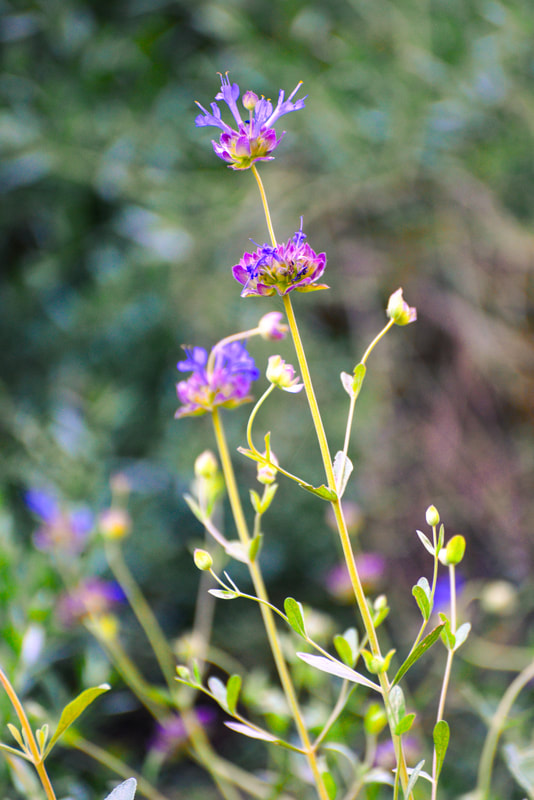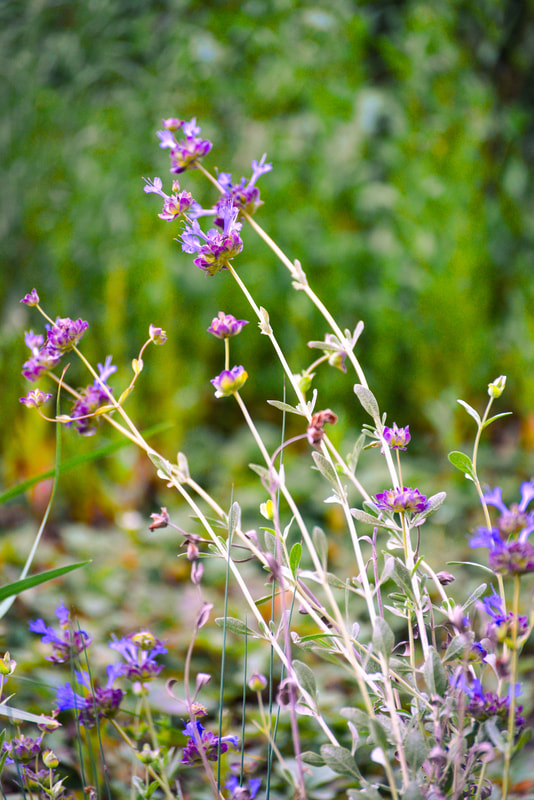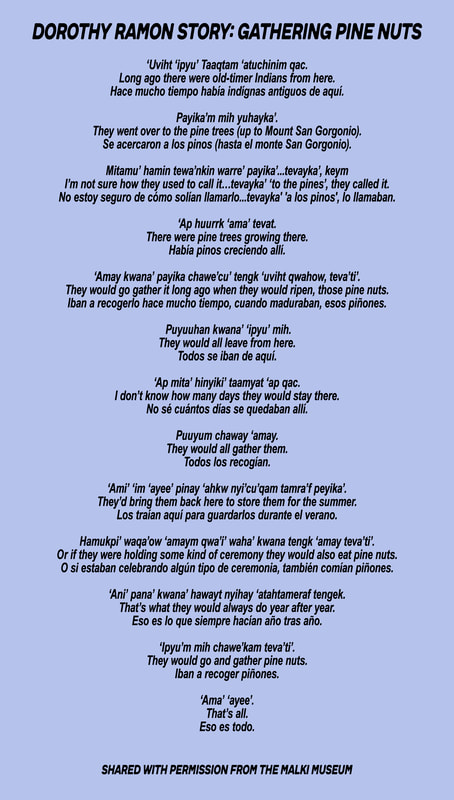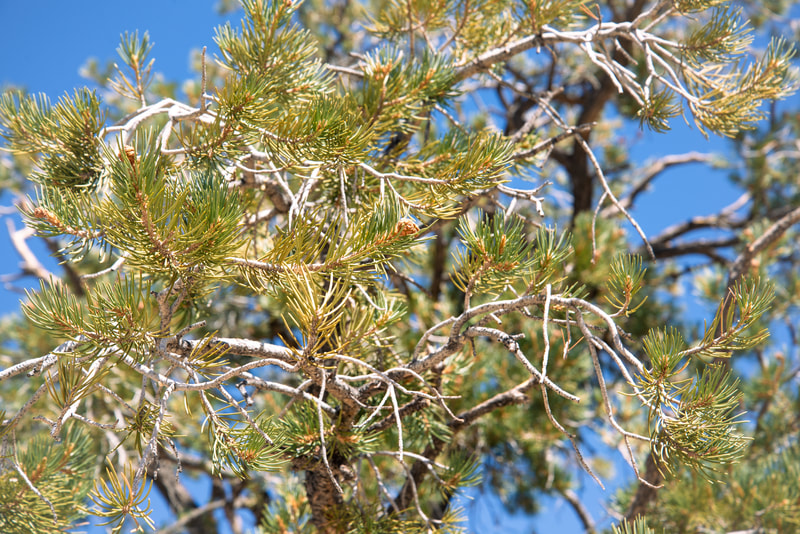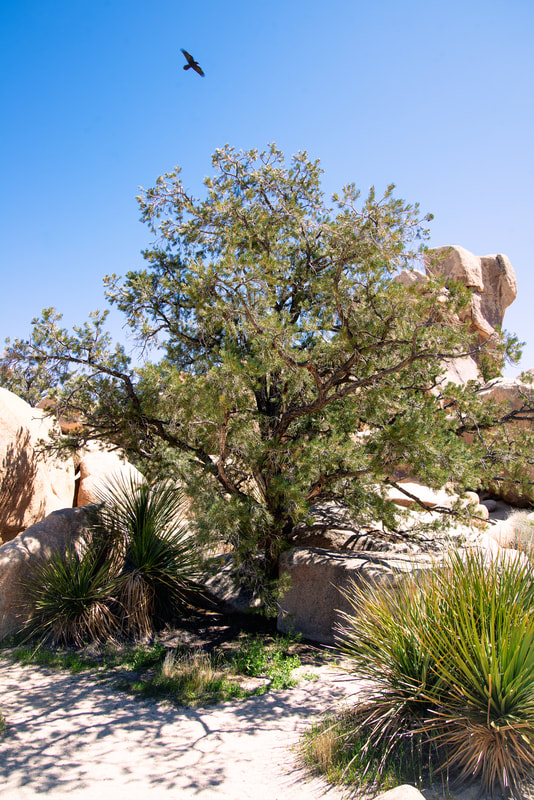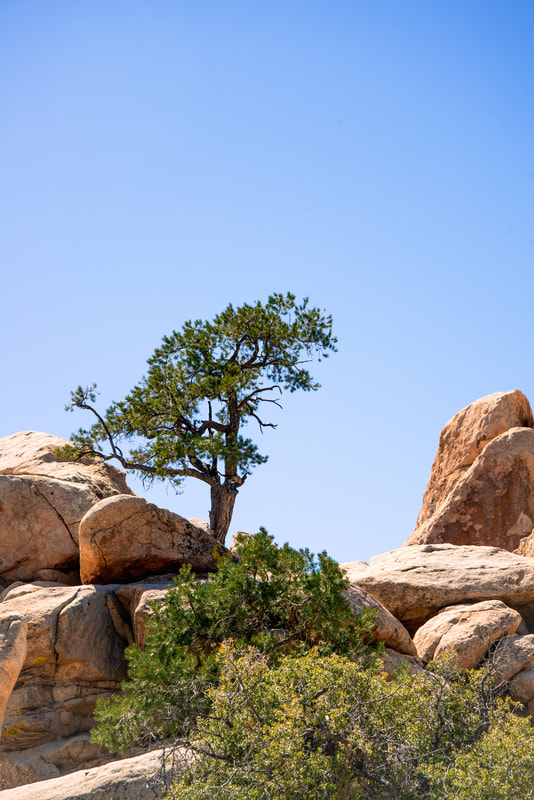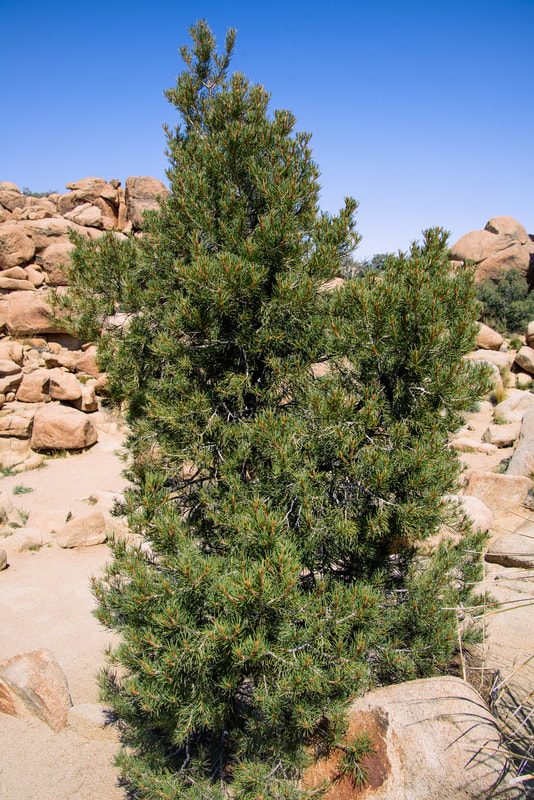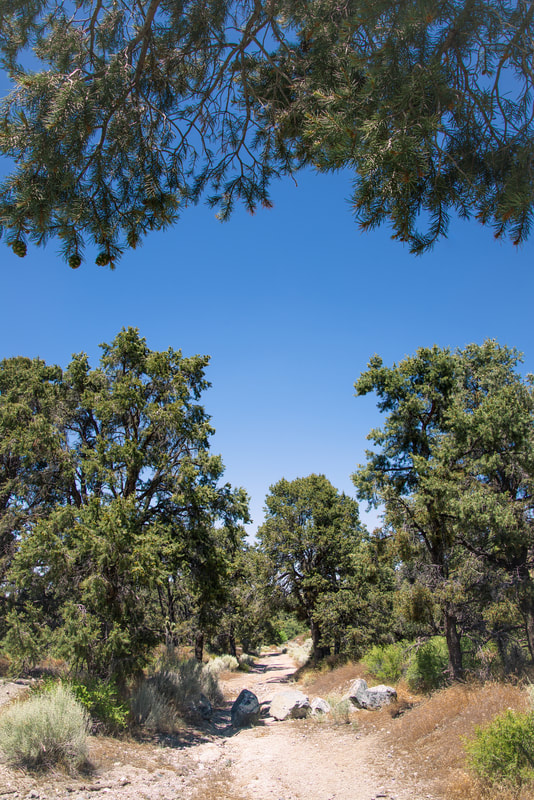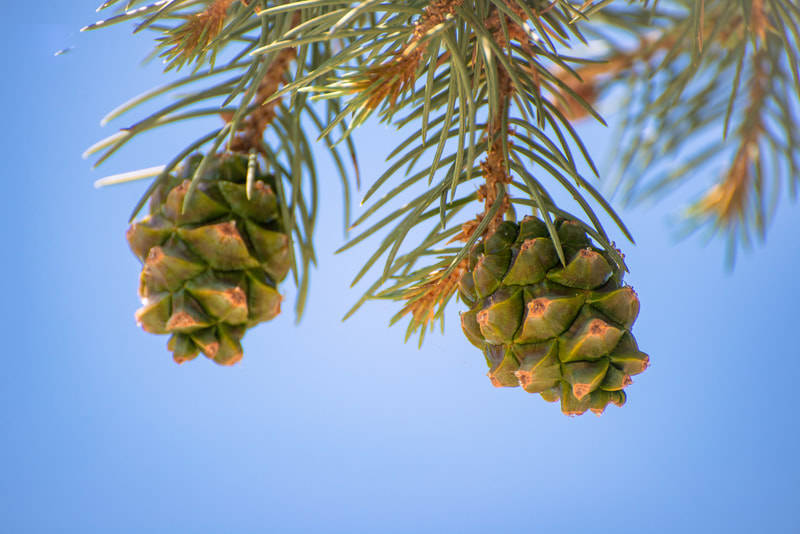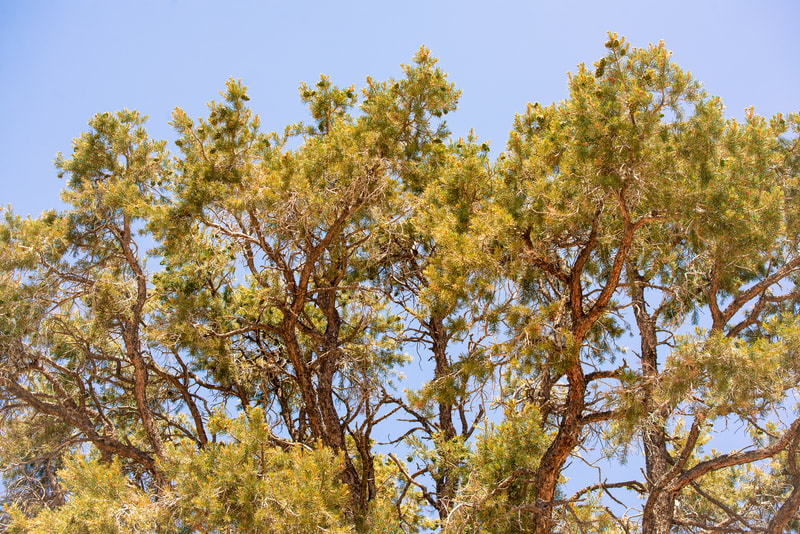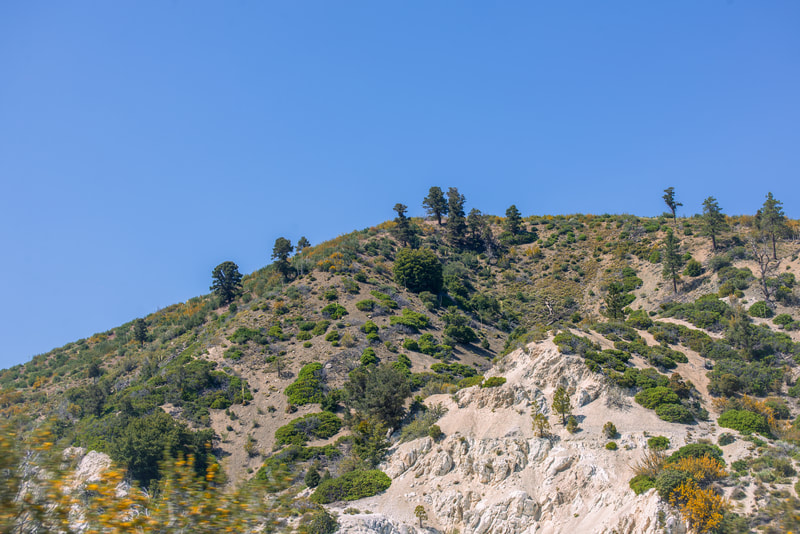Menu
San Bernardino
|
Hello! And welcome to the garden of San Bernardino!
San Bernardino encompasses the ancestral lands of the Maara’yam, also referred to as the Serrano, and the Gabrielino (Tongva) whose nation is called “Tovaangar” communities. Maara’yam ancestral territory covers over 7.4 million acres of Southern California and the Tovaangar nation covers over 2.5 acres! Within the San Bernardino Mountains, the Big Bear Valley is home to the Yuhaaviatam Clan of Maara'yam (Serrano). Yuhaaviatam means "People of the Pines". Here in our San Bernardino garden, we can see the Chia, Black Walnut, Black Oak, Blue Elderberry, Pinyon Pine, and Chaparral Yucca! These are all important plants to our local indigenous communities! Today, Tribal Communities collaborate with local agencies, such as the United States Forest Service, National Park Service, and others, to obtain permits to gather culturally significant plants and other natural materials. We’re so glad you’re here! |
¡Hola y bienvenidos al jardín de San Bernardino!
San Bernardino abarca las tierras ancestrales de los Maara’yam, también conocidos como los Serrano, y los Gabrielino (Tongva) cuya nación se llama “Tovaangar”. El territorio ancestral de los Maara’yam cubre más de 7.4 millones de acres en el sur de California, mientras que la nación Tovaangar cubre más de 2.5 millones de acres. Dentro de las Montañas de San Bernardino, el Valle de Big Bear es hogar del Clan Yuhaaviatam de los Maara’yam (Serrano). Yuhaaviatam significa “Pueblo de los Pinos”. Aquí en nuestro jardín de San Bernardino, podemos ver la Chía, la Nuez Negra, el Roble Negro, el Saúco Azul, el Pino Piñonero y el Yucca del Chaparral. ¡Estas son todas plantas importantes para nuestras comunidades indígenas locales! Hoy en día, las comunidades tribales colaboran con agencias locales, como el Servicio Forestal de los Estados Unidos, el Servicio de Parques Nacionales y otras, para obtener permisos para recolectar plantas culturalmente significativas y otros materiales naturales. ¡Estamos muy contentos de que estés aquí! |
Black Oak (Quercus kelloggii) Kʷiihc
|
Southern California Indigenous Communities and Black Oak, Serrano: Kʷiihc
Oak trees take a loooong time to grow! When you’re standing next to an oak tree you might be standing next to a witness to the last century! Wow! That’s a long time. California Black Oak trees grow throughout the hills of the San Bernardino and San Jacinto mountains. You might’ve learned at some point that acorns from oak trees were a really important food source for California Indigenous Communities. Did you know that different kinds of oak trees make different tasting acorns? Guess which acorn is the yummiest? Did you guess black oak? If you did, you’re right! Acorns are a particularly yummy food. The foods of our cultures can tell us a lot about who we are. Do you have a favorite food that is important to your culture? One of the main staples of the Indigenous Communities diets was the acorn from the Black Oak tree. These acorns were prized because of their lower tannin content and sweeter taste. The acorns were ground into flour, which was leached with water to remove the tannic acids that caused a bitter taste. The flour was then made into cakes or, more commonly, porridge. There are large stones near sites where acorns were processed by native Californians. There is a picture of one right here! Isn’t it so smart and neat?! |
Comunidades Indígenas del Sur de California y el Roble Negro, Serrano: Kʷiihc
¡Los robles tardan muuuucho tiempo en crecer! Cuando estás al lado de un roble, ¡podrías estar al lado de un testigo del último siglo! ¡Guau! Eso es mucho tiempo. Los robles negros de California crecen en las colinas de las montañas de San Bernardino Y San Jacinto. Probablemente hayas aprendido en algún momento que las bellotas de los robles eran una fuente de alimento muy importante para las Comunidades Indígenas del Sur de California. ¿Sabías que diferentes tipos de robles producen bellotas con diferentes sabores? ¿Adivina cuál es la bellota más deliciosa? ¿Adivinaste el roble negro? ¡Si lo hiciste, tienes razón! Las bellotas son un alimento particularmente delicioso. Los alimentos de nuestras culturas pueden decirnos mucho sobre quiénes somos. ¿Tienes un alimento favorito que sea importante para tu cultura? Uno de los alimentos principales en la dieta de las comunidades Indígenas era la bellota del roble negro. Estas bellotas eran muy valoradas por su menor contenido de taninos y su sabor más dulce. Las bellotas se molían en harina, que luego se lavaba con agua para eliminar los ácidos tánicos que causaban un sabor amargo. La harina se convertía en pasteles o, más comúnmente, en gachas. Hay grandes piedras cerca de los sitios donde las Comunidades Indígenas procesaban las bellotas. |
Southern California Black Walnut (Juglans californica)
|
Southern California Indigenous Communities and California Black Walnut
Hi friends! I’m feeling a little nutty! It must be all these … walnuts! Did you know this is what a walnut tree looks like? They’re all over! The Southern California Black Walnut grows in the southern half of California, especially in the Central Valley and Coast Range valleys throughout Northern and Southern California. The walnuts are a great food source, and became an agricultural staple until the 1920s. What’s your favorite nut? Have you ever researched where it’s from and how it gets to you? This plant friend doesn’t just feed us, it wants to get creative too! The hull of the walnut is perfect for acting as a dye, while the bark is used for basket-making. Have you ever made a dye from plants? What would you dye with walnut husk dye? |
Comunidades Indígenas del Sur de California y Nogal Negro de California
¡Hola amigos! ¡Me siento un poco loco! ¡Debe ser por todas estas... nueces! ¿Sabían que así es como se ve un nogal? ¡Están por todas partes! El Nogal Negro del Sur de California crece en la mitad sur de California, especialmente en el Valle Central y en los valles de la Cordillera Costera a lo largo del norte y sur de California. Las nueces son una gran fuente de alimento y se convirtieron en un producto agrícola básico hasta la década de 1920. ¿Cuál es tu nuez favorita? ¿Alguna vez has investigado de dónde proviene y cómo llega hasta ti? ¡Este amigo vegetal no solo nos alimenta, también quiere ser creativo! La cáscara de la nuez es perfecta para usar como tinte, mientras que la corteza es utilizaba para hacer cestas. ¿Alguna vez has hecho un tinte a partir de plantas? ¿Qué teñirías con el tinte de cáscara de nuez? |
Blue Elderberry (Sambucus mexicana) Kuuht
|
Southern California Indigenous Communities and Blue Elderberry, Serrano: Kuuht
Have you ever taken Elderberry when you’re sick? I’ve been known to eat some berries… ok, I eat a lot of elderberries. They’re so good! Well guess what? It looks like everywhere elderberries grow, everyone likes them! In our home, our elderberry friends are blue! Guess what they’re called? Blue Elderberry! Hahaha, that wasn’t very hard was it? Our elderberry friend likes water, just like we do! It grows near springs, streams, and other places where the soil isn’t too dry. The elderberries can be eaten fresh or dried and a sweet sauce can also be made from the berries. Today, elderberries are turned into jams, jellies, syrups, all kinds of yummy treats! When you make elderberry tea it is believed to relieve fevers, upset tummies, colds, and the flu and a tea made from the roots can help your tummy when you feel like you can’t get it all out, if you know what I mean. It’s good for your teeth and it’s good for kids! And probably kids with teeth. Or without teeth. Teeth optional. Elderberry doesn’t care, it loves you as you are. Elderberry doesn’t just taste great and make us feel good, it likes to make art too! Indigenous Communities used it for dyeing purposes. The juice of the berries became a dark purple color, while the stem turned into a gold-color dye. The twigs of the berry were used to make whistles as well. Elderberry wants you to feel good, look good, and party! It’s like the perfect best friend. |
Comunidades Indígenas del Sur de California y Saúco Azul, Serrano: Kuuht
¿Alguna vez has tomado saúco cuando estás enfermo? He sido conocido por comer algunas bayas... bueno, ¡como muchas bayas de saúco! ¡Son tan buenas! Bueno, ¡adivina qué! ¡Parece que donde sea que crecen las bayas de saúco, a todos les gustan! En nuestra casa, nuestros amigos saúcos son azules. ¿Adivina cómo se llaman? ¡Saúco azul! Jajaja, eso no fue muy difícil, ¿verdad? A nuestro amigo el saúco le gusta el agua, ¡igual que a nosotros! Crece cerca de manantiales, arroyos y otros lugares donde el suelo no está demasiado seco. Las bayas de saúco se pueden comer frescas o secas, y también se puede hacer una salsa dulce con ellas. Hoy en día, las bayas de saúco se convierten en mermeladas, jaleas, jarabes y todo tipo de deliciosos manjares. Se cree que cuando haces té de saúco, puede aliviar la fiebre, los malestares estomacales, los resfriados y la gripe. Y un té hecho con las raíces puede ayudar a tu estómago cuando sientes que no puedes vaciarlo del todo, si sabes a qué me refiero. Es bueno para tus dientes y es bueno para los niños. Y probablemente para los niños con dientes. O sin dientes. Los dientes son opcionales. Al saúco no le importa, te quiere tal como eres. El saúco no solo sabe genial y nos hace sentir bien, ¡también le gusta hacer arte! Las Comunidades Indígenas lo usaban para teñir cestas. El jugo de las bayas se convertía en un color púrpura oscuro, mientras que el tallo se convertía en un tinte color oro. Las ramitas de la baya se usaban para hacer silbatos también. El saúco quiere que te sientas bien, que te veas bien y que te diviertas. Es como el amigo perfecto. |
Chaparral Yucca (Hesperoyucca whipplei) Uumuc
|
Southern California Indigenous Communities and Chaparral Yucca, Serrano: Uumuc
Have you ever seen anything as magnificent as a yucca blossom?! I mean… WOW. Our chaparral yucca friend grows in southwestern California and northern Baja California. You can find the plant in areas with dry vegetation, especially at rocky or sandy slopes of the hills. The hills are alive with yucca! Our Indigenous Communities use this type of yucca extensively as a source of food, as a source of fibers to make baskets and cordage, and as a natural source of soap. Even the dead stalks can be used to make quivers for arrows. The leaves of our yucca friend were great tying tools in construction, for tying beams and poles together in houses. The stalks of the plant were harvested before the flowers bloomed. The stalks were either baked overnight to be ground and then turned into cakes or boiled and eaten like squash. The blossoms can be partially boiled and eaten. According to the Serrano Peoples, the younger the blossoms, the yummier they are. The green pods that hold unbloomed flowers and seeds are often eaten raw! |
Comunidades Indígenas del Sur de California y Yucca de Chaparral, Serrano: Uumuc
¿Alguna vez has visto algo tan magnífico como una flor de yuca? ¡Quiero decir... WOW! Nuestra amiga la yuca chaparral crece en el suroeste de California y el norte de Baja California. Puedes encontrar la planta en áreas con vegetación seca, especialmente en pendientes rocosas o arenosas de las colinas. ¡Las colinas están llenas de yucas! Nuestras Comunidades Indígenas utilizan este tipo de yucca extensamente como fuente de alimento, como fuente de fibras para hacer cestas y cordaje, y como fuente natural de jabón. Incluso los tallos secos se pueden usar para hacer aljabas para flechas. Las hojas de nuestra amiga la yuca eran excelentes herramientas de amarre para construcción, atar vigas y postes en las casas. Los tallos de la planta se cosechaban antes de que las flores florecieran. Los tallos se horneaban durante la noche para ser molidos y luego convertidos en pasteles, o se hervían y se comían como calabacines. Las flores se pueden hervir parcialmente y comer. Según los pueblos Serrano, cuanto más jóvenes son las flores, más deliciosas son. ¡Las vainas verdes que contienen flores y semillas no florecidas a menudo se comen crudas! |
Chia (Salvia columbariae) Paanihac
|
Southern California Indigenous Communities and Chia, Serrano: Paanihac
Have you heard of chia? Chia pets? Chia in smoothies or drinks or pudding? That very same chia plant is our friend and it grows in California, Nevada, New Mexico, Sonora, and Baja California! And… can you believe it’s also a species of sage? Isn’t sage cool?! Here in California, we can find our chia friend hanging out on the coast and the southern Sierras. You can even find it around here sometimes! Indigenous Communities harvest chia using seed beaters (1). To remove the outside of the seeds, you gotta roll it and apply pressure. Kinda like working with garlic! Or so I’ve heard. I don’t really cook. I’m a rabbit . In the past, when the seeds were ready, they were dried in a basket or clay trays on top of hot coals, then ground to make cakes or soaked in water to make a drink. Chia could even be used to clean infections or clean the eyes to remove irritation. Chia seeds have so much yummy protein that people all over the world use them for energy and strength! Can you think of a time you needed energy and strength? Chia is a really special friend, which is why it’s so important. Do you know of any plants that are special like that in your culture or community? |
Comunidades Indígenas del Sur de California y Chía, Serrano: Paanihac
¿Has oído hablar de la chía? ¿Chía pets? ¿Chía en batidos, bebidas o pudines? ¡Esa misma planta de chía es nuestra amiga y crece en California, Nevada, Nuevo México, Sonora y Baja California! Y... ¿puedes creer que también es una especie de salvia? ¡¿No es genial la salvia?! Aquí en California, podemos encontrar a nuestra amiga la chía en la costa y en las sierras del sur. ¡Incluso puedes encontrarla por aquí de vez en cuando! Las Comunidades Indígenas cosechan la chía usando batidores de semillas. Para quitar el exterior de las semillas, hay que rodarlas y aplicar presión. ¡Algo así como trabajar con ajo! O eso he oído. Yo no cocino realmente. Soy un conejo. En el pasado, cuando las semillas estaban listas, se secaban en cestas o bandejas de arcilla sobre carbones calientes, luego se molían para hacer tortas o se remojaban en agua para hacer una bebida. La chía incluso se podía usar para limpiar infecciones o limpiar los ojos para quitar la irritación. ¡Las semillas de chía tienen tanta proteína deliciosa que personas de todo el mundo las usan para obtener energía y fuerza! ¿Puedes pensar en un momento en el que necesitaste energía y fuerza? La chía es una amiga realmente especial, ¡por eso es tan importante! ¿Conoces alguna planta que sea especial así en tu cultura o comunidad? |
- Porter, Robert, Chia, A Plant of Power, August 26, 2020, https://dorothyramonlearningcenter.substack.com/p/chia?utm_source=publication-search
Piñon Pine (Pinus monophyla) Tüvat
|
Southern California Indigenous Communities and Pinyon Pine, Serrano: Tüvat
Mmmmmm, smell that? Yep, that’s a pine tree! Ooh they smell so good and are such important friends! In fact, they’re not just friends, they’re protectors and some are even ancestors! The pinyon pine trees grow in the Southwestern United States, especially in New Mexico, Colorado, Arizona, and Utah. And they provide yummy food! Harvesting the nuts from the pine cones took a few days to complete. The young pinecones were picked from the tree with a hook, then the cones were burned. The Indigenous Communities harvested young pinecones so they could get the nuts before the birds and animals did. Animals like me. Pine nuts can be eaten whole, ground into a mush, or made into a drink. You can store the nuts for later too. Can you think of another animal who stores nuts? The wood of the Pinyon pine trees catches fire very easily. The pine sap was used by Indigenous Communities as a sunscreen or as roofing, and the pine needles were used in basket-making. Such a generous wonderful smelling tree, I just wanna hug it! Except for those needles… |
Comunidades Indígenas del Sur de California y Pino Piñonero, Serrano: Tüvat
Mmmmmm, ¿hueles eso? ¡Sí, es un pino! ¡Oh, huelen tan bien y son amigos tan importantes! De hecho, no solo son amigos, son protectores y algunos incluso son ancestros. Los pinos piñoneros crecen en el suroeste de los Estados Unidos, especialmente en Nuevo México, Colorado, Arizona y Utah. ¡Y proporcionan comida deliciosa! La recolección de los piñones de las piñas tomaba unos días para completarse. Las piñas jóvenes se recogían del árbol con un gancho, luego las piñas se quemaban. Las Comunidades Indígenas cosechaban piñas jóvenes para obtener los piñones antes que los pájaros y animales. Animales como yo. Los piñones se pueden comer enteros, molidos en una papilla o convertidos en una bebida. También puedes almacenar los piñones para más tarde. ¿Puedes pensar en otro animal que almacene nueces? La madera de los pinos piñoneros se enciende fácilmente. La savia de pino era utilizada por las Comunidades Indígenas como protector solar o como material para techos, y las agujas de pino se usaban para hacer cestas. ¡Qué árbol tan generoso y de olor maravilloso, quiero abrazarlo! Excepto por esas agujas... |
Site powered by Weebly. Managed by iPage
